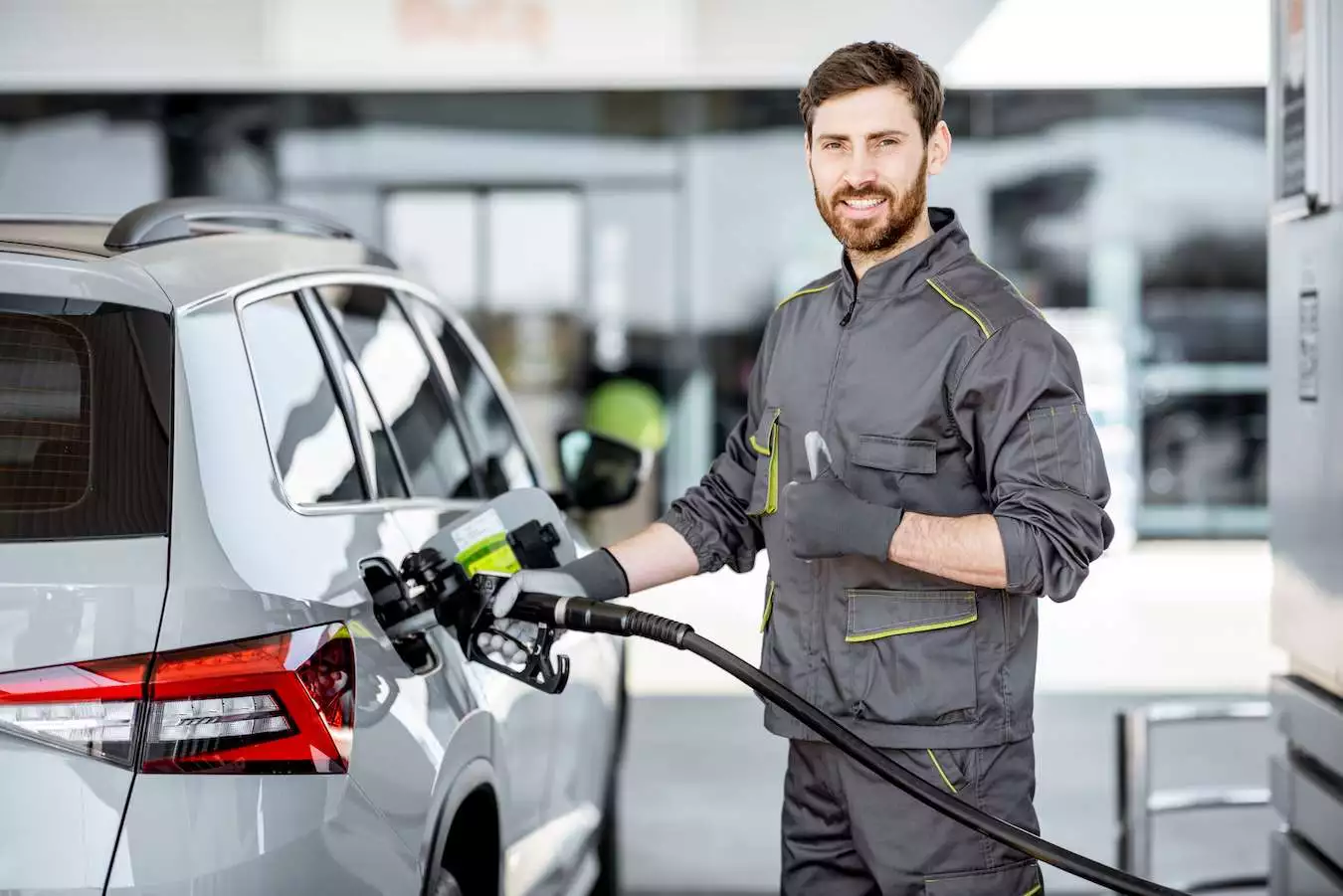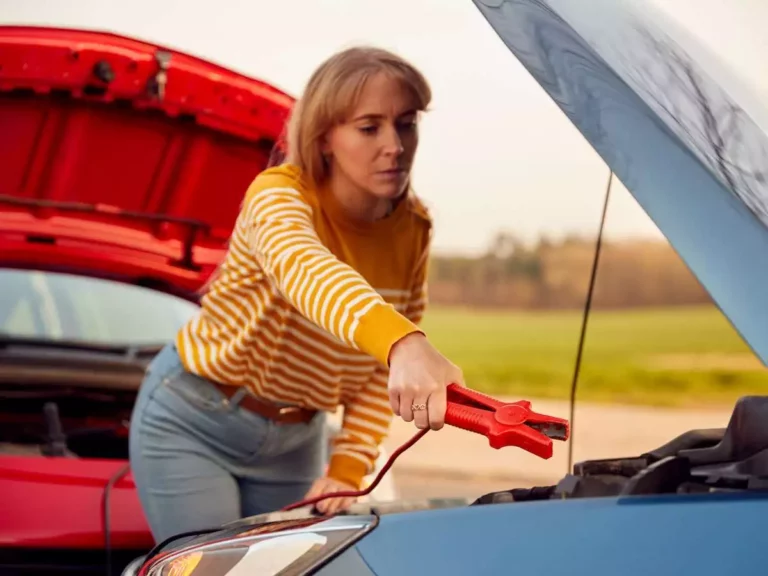Why Do Cars Need Gas? [A Complete Guide!]
A car’s engine is mostly hidden, so without taking it apart, you can’t see what it does and how it works. It’s common knowledge that you must regularly fill up a car with gas. So, in this article, I will explain why cars need gas.
Cars need gas (or fuel) to move. Combustion of gas in traditional cars generates the force required to rotate the wheels. A tiny amount of gas is ignited by the spark plugs. The ignited fuel expands rapidly, generating a lot of force that turns the pistons, which turn the wheels of a car.
There are also electric-powered cars that don’t require gas. Below, I will explain in more detail the inner workings of a car engine, so you can get a more in-depth idea about why cars need gas. As well as the difference between the different types of gas such as diesel and petrol, how long a car can run without gas, and why cars need water.
How Does Gas Make a Car Run?
At a basic level, the engine turns the wheels of a car. An engine is connected to the wheels’ axle, which is a long metal shaft. The engine rotates the pistons in reaction to a process known as combustion. The pistons are connected to a drive shaft which is in turn connected to the axle.
Here’s a really good video that shows how fuel in a car causes the pistons to turn:
During chemical reactions, individual molecules are changed. When this happens, a lot of energy is released. This energy is stored in chemical bonds between the different atoms in the gas.
Gas such as petrol and diesel are very energy dense. Therefore, you only need a small amount of gas to generate a lot of energy and more than enough to turn the wheels of a car.
You can tell this is the case if you were to attempt to move a car by pushing it yourself, and getting a car to move would be difficult unless you’re very strong.
How a car generates so much force with a small amount of fuel
Gas is very flammable, and if a naked flame comes in contact with it, it will easily catch alight. It is very different from other liquids like water which do not ignite at all.
But, there is a difference between how a car burns gas and how something like a gas stove burns.
They both burn fuel by igniting it. But, a car engine pressurizes the gas a lot, which generates even more force when it’s ignited. It also burns the gas incredibly quickly, generating a lot of force. So fast that it causes what is technically an explosion. However, the explosion is very small.
It burns so quickly because only a very small amount of gas is burned up at a time.
This explosion happens inside a closed space called the piston. When the explosion occurs, it pushes a movable end of the enclosed space. This movable end is connected to a turning mechanism.
It is specifically designed so that enough force is generated by the explosion to make the pistons do one turn. And return it to its starting position. So, each tiny explosion turns the piston into one full revolution. Amazingly, this tiny explosion is so strong it’s enough to turn the wheels of a car.
As you may know, a gas stove is turned on by opening the gas. You then light it with an electronic spark when your turn the knob on your oven. Or, you can use a lighter or a match. The speed at which a gas oven burns is very slow.
The reason it burns slowly is that it’s not mixed purposely with air, which increases how fast it burns. And it is not pressurized when it’s ignited.
Can Cars Run Without Gas?
It’s easy to procrastinate on putting more fuel in your car, and a car can continue to work when the low fuel light comes on. But, this may make you wonder if cars can run without gas, and if so, how far can you drive without gas in the car?
On average, a moving car can run 30 to 40 miles (48 to 65 km) or about 30 minutes of driving with no fuel. Cars have a reserve tank which gets used when the empty tank light comes on. After the reserve tank is empty, a car will completely stop and won’t start without fuel being added to the fuel tank.
The most inconvenient thing that can happen is running out of gas before you can get to a gas station. Therefore, it’s best practice to immediately go to a gas station once the empty fuel light comes on or the fuel gauge is in the red.

But, ideally, you should aim to get to the gas station before the empty light comes on. That way, you won’t be as stressed or worried that you will run out of fuel. And it’s far less likely you won’t make it to a gas station before your car completely runs out of gas.
Difference Between Diesel and Petrol Cars
Diesel and petrol are different types of fuel used in cars. You can not put diesel into a petrol engine, and you can’t put petrol into a diesel engine. But, here are the differences between diesel and petrol cars.
Overall, diesel engines are more energy efficient, provide more torque relative to the revolutions per minute (RPM) of the engine, and don’t have sparkplugs. Diesel fuel contains 15% more energy than petrol. Diesel engines also compress air and fuel to a higher pressure, generating more force.
The major difference between diesel and petrol engines is the lack of spark plugs (source). A petrol engine uses spark plugs to ignite the fuel and air mixture. But interestingly, when air and gas are compressed A LOT, it will self-ignite. This is because when fuel and air are compressed a lot, it generates heat. So much heat that it will catch fire.
A diesel engine is designed in such a way that the pressure inside the cylinder gets high enough that it will ignite. Because the pressure is higher when the fuel and air mixture ignites, it creates more pressure inside the piston.
Petrol engines, by comparison, don’t pressurize the fuel as much and instead use a sparkplug to ignite the fuel. For this reason, a diesel engine creates more torque at the same revs (RPM) compared to a petrol car.
A diesel car is also cheaper to run because diesel fuel is cheaper to buy. Diesel fuel is cheaper because it’s less processed than petrol. Therefore, it requires less work to refine it from raw oil, also called crude oil.
Why Do Cars Need Water?
If you are not that car saavy, you might be surprised to know that a car not only uses gas, but it also needs water!
The radiator of a car needs to be topped up with water and engine coolant. Older cars have one place where you add a water and coolant mixture, whereas newer cars have a water coolant tank that is filled with a water and coolant mixture. But here’s why cars need water.
In general, the water cools the engine. Water and coolant are pumped through the engine to reduce and carry away heat. There is also a fan that helps cool the engine. If no water is used in a car engine, it will overheat, which can damage the components in an engine.
As you may know, before a car overheats, the temperature light will appear on the dashboard. When this happens, you should immediately pull over and allow the engine to cool off.
This can happen if the water and coolant mixture is low. But, it can also be caused by a range of other factors. Cars have different types of coolant that should be used, according to Natrad, a company that makes car radiators and services them.
Therefore, you should refer to the owner’s manual for your car to see what type of coolant to use. Commonly the coolant should be mixed with water at a ratio of 50:50. However, this can also vary. So you should also check this in the owner’s manual for your car.
Why Do Cars Need Oil?
Oil is required for cars, and as you may know, the oil and the oil filter need to be changed about every six months. So, here’s why oil is necessary for a car.
Overall, the oil (or engine oil) protects the engine by stopping metal-to-metal contact between the components in the engine, carrying away harmful deposits that accumulate in the engine, and reducing the engine’s operating temperature by reducing friction.
Interestingly, oil is cleaned before it goes into the engine by the oil filter. After it has passed through the engine, it returns to the oil tank. Without oil, the metal components on an engine would rub against each other.
Whereas with oil, the components slide against each other rather than grind. As a result, they heat up slowly and don’t wear out against each other nearly as fast. Here’s a really good video from Castrol, the oil manufacturer, that shows how oil travels around an engine:
How oil in a car is changed and why?
Over time the oil filter accumulates debris and does a worse and worse job of filtering the oil. Therefore, most car manufacturers recommend changing the oil filter every six months.
This involves draining the oil from the oil tank and removing the oil filter. Then, put in a new oil filter and refill the oil tank with brand new oil. Virtually all cars have a special nut at the bottom of the oil tank that you unscrew.
The oil then drains out from the hole that the nut was clogging. An oil change is easy enough that you can do it yourself. However, many people also have a mechanic do it when they take their car for a routine service.



![Do Cars Have Air Filters? [Here’s Everything to Know!]](https://vehicleuniversity.com/wp-content/uploads/2023/01/hand-hold-dirty-car-air-conditioning-filter-2021-08-30-02-20-32-utc-768x576.webp)

![Why Do Deer Run Into Cars? [With Tips to Avoid Them!]](https://vehicleuniversity.com/wp-content/uploads/2023/01/reindeers-crossing-a-road-in-autumn-season-in-finl-2021-08-26-16-01-26-utc-768x576.webp)
![Difference Between Tire and Wheel? [Complete Guide!]](https://vehicleuniversity.com/wp-content/uploads/2023/01/men-working-in-the-warehouse-with-tires-2022-01-19-00-27-19-utc-768x576.webp)
![Do Cars Lock Automatically? [Here’s What You Should Know!]](https://vehicleuniversity.com/wp-content/uploads/2023/01/car-key-in-female-hand-on-the-backdrop-of-auto-2022-06-13-23-51-39-utc-768x512.webp)
